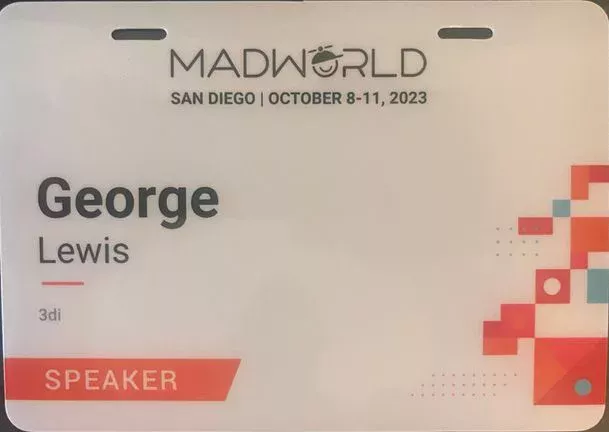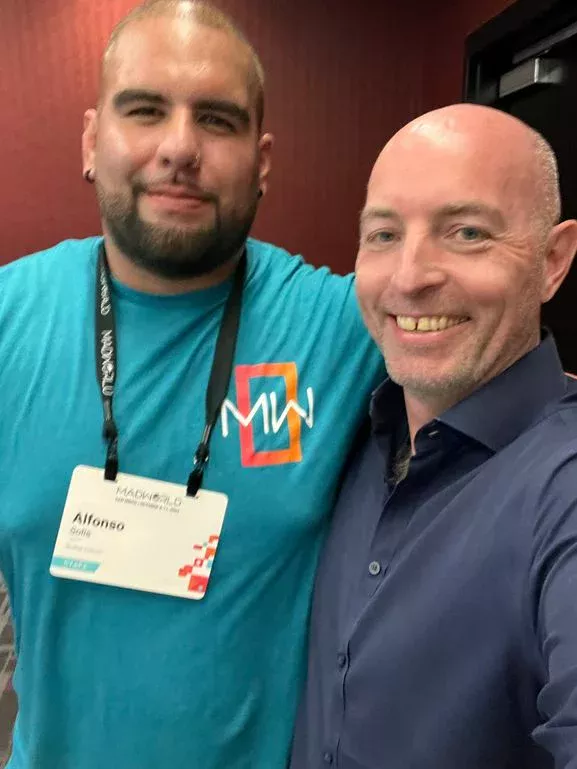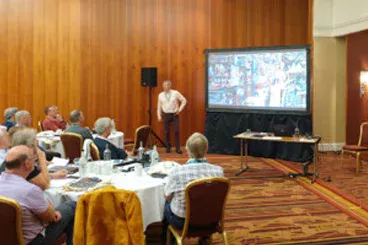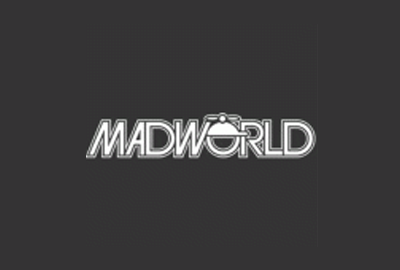MadCap held their annual user conference, MadWorld, from 8th to 11th October in San Diego. This is an opportunity for MadCap software users to share their experiences with using MadCap’s tools to solve their content challenges. This year was dominated by MadCap’s recent acquisition of IXIASOFT – more on that later.
MadWorld Conference 2023: A Summary
The following themes emerged as key areas of discussion during the conference:
- MadCap’s product evolution
- Information design
- AI and its use in technical communications
- Intelligent content & metadata
- Translation & localization
- Automation
There were so many great talks, I was not able to attend them all. However, MadCap now record all talks and makes them available to attendees, which is another great benefit of attending the conference. So, there may be an update to this blog – after I have been through all the talks!
MadCap’s product evolution

The big news of the conference was the IXIASOFT acquisition and how it fits into the MadCap ecosystem. As expected, there were several IXIA people at the conference, but my inner fanboy came out when I realized there were some OG DITA folk there too, such as Leigh White, who literally wrote the book on creating PDFs from dita.
MadCap now presents three products positioned to align with a company’s technical communications maturity. They provide a path along which companies and tech comms teams can evolve as their content processes grow in scale and complexity:
- Flare only: Small tech comms team
- Central + Flare: Larger teams or cross team collaboration
- IXIA CCMS: Large scale enterprise
Previous products like Capture and Mimic are provided as add-ons for MadCap Flare.
On the MadWorld Conference there were a few talks that focused on DITA and IXIA CCMS to introduce the new product and technology to the MadCap user base. Leigh White’s talk provided an overview of IXIA CCMS (Meet the Neighbors: An Overview of the IXIACCMS), and in my talk, (When Does It Make Sense To Consider DITA), I provided a framework to help tech comms teams or companies recognise when they should consider moving from a desktop authoring tool to a DITA/CCMS.
MadCap Central
MadCap Central has come a long way over the past few years. Central is a cloud platform designed to support the entire content development lifecycle by providing collaboration, review and multi-channel publishing capabilities – including integrations to third party platforms.
Over the past couple of years several capabilities have been improved that we at 3di feel make Central a strong arrow in the MadCap quiver. These include Git repository branching capabilities that now allow support of the most typical Git workflows, and also the contributing and reviewing capabilities that provide a topic editor and a vastly improved review experience.
And of course, AI has come to Central in the form of AI Assist – more on that next.
Want to find out more?
AI and its use in technical communications
AI, especially generative AI, has been everywhere over the last year – MadWorld 2023 was no exception.
MadCap have added AI tools to Central in the form of AI Assist. AI Assist provides an editing interface into ChatGPT that makes it easier to edit and incorporate ChatGPT output into Flare topics. It does this by providing an editing interface with difference tracking that allows writers to review, edit and iterate content produced by ChatGPT. However, you need to connect AI Assist to your own, or corporate, ChatGPT account.
Over time, MadCap plan to expand the capabilities of AI Assist, and to broaden it out from just ChatGPT.
In addition to demonstrations of AI Assist by Paul Stoecklein and Jennifer Morse, Paul Wolfe gave some good examples of areas where he has been using various AI tools in the content life-cycle to support his team. He described three content creation paths he has been following to incrementally increase the automation AI tools provide. With each path, he builds trust in the AI tools that he then allows less human involvement, for example, writing short descriptions to support SEO.
Information design
Information design is at the core of what we do at 3di, so it was great to see a number of talks address the design and planning that needs to happen before you start using a tool like Flare.

Christine Crafton and Mike Huffman covered the theory of Instructional Design including an explanation of a few models such as the New Bloom’s Taxonomy, and R2D2 (From Drab to Fab). It was good to get a different perspective on building content designed to teach people. I took away some great ideas to apply to structuring topics and learning paths.
Leah Catania covered some practical tools for Information Design and design systems, including Card Sorting and Tree Testing (Card Sorting or Tree Testing? Best Methods for Testing Information Architecture), and also how to apply the outcomes to your documentation (Applying a Design System to Your Document Design).
Intelligent content using metadata
Scott DeLoach showed some great use cases for leveraging Flare’s topic metadata for creating “intelligent” content (Intelligent Content Strategy). Some of these used native Flare capabilities, such as Promotion and FAQ proxies, but some required additional JavaScript to make them work, for example, pulling microcontent files into pages that have the same metadata as the topic.
The Promotion proxy was not something I have found a compelling use for, so it was interesting to see Mike Hamilton’s suggestion for using it to show “Related Content” on a page (Delivering Customer-Centric Content: Analytics and Micro Content in Action). This approach allows you to display one of a set of microcontent on page load in sequence or random. The content metadata is used to select the microcontent to display, thereby allowing the topic metadata to determine what content is displayed.
Another example of using metadata to deliver dynamic content is through the FAQ proxy. Chad Kreiger demonstrated how he manages FAQs centrally as microcontent, and then uses the FAQ proxy to display those FAQs on multiple pages based on metadata (Streamlining FAQs: Enhancing the Customer Experience).
Want to find out more?
Translation & localization
At 3di we provide end-to-end content creation services, so I am always excited to learn more about advances in translation and localization tools and processes. And this year, MadWorld 2023 didn’t disappoint.
Jeff Dhillon & Meinrad Reiterer described how they streamlined their localization workflow by using the diff capabilities of Git repos to identify content required for translation (Going Git – An Easy Way to Translate Flare Projects). Their approach leveraged the capabilities of a tool they were already using, and also eliminated additional conversion steps.
With a brand new product to demonstrate in IXIA CCMS, it was nice to have time to see Ray Davis talk about Capture (A Picture is Worth a Thousand Words…In Any Language – Part I and Part II). Capture is MadCap’s screen capture (screenshot) tool. A key advantage of Capture is that it extends Flare’s single-sourcing capabilities by allowing variables and conditional tags to be used in the image annotations and then applied when the target is built.
Automation
One of the reasons we love Flare at 3di is its extensibility due to its source being text-based. This allows you to take content and files from different places and convert them into Flare files, thereby improving speed and quality.

A use case we at 3di use was demonstrated by Jeff Dhillon (Turning UI Strings into Variables for a Single Source of Truth – all languages). He showed how UI string files can be converted to a Flare variables files. This ensures that terminology is always aligned in the source language, as well as in any localized versions.
Nico Conforti demonstrated how you can take this approach a step further by using the Beautiful Soup python library to pull in content from external data sources and then converting them to Flare source files at build time. His workshop used public weather and city population API as an example (Soup with your Flare? Automating the Boring Stuff). In day-to-day work, his team uses this technique to ensure that published content is always up to date by getting data from the source of truth each time his documents are built.
A favourite of mine, who always impresses me with what he and his team achieve with Flare automation, is Tomas Bro Rasmusen (T-Bro). Unfortunately I didn’t get to see his talks this year, but I will be catching up with the recordings.
So how was it …
I had not been to a MadWorld conference since Dublin in 2019. Having relocated to Mexico to set up a new 3di office, I was excited to have the chance to visit MadCap in their home town. And I wasn’t disappointed.
There was a good mix of new product developments and ways to get the most out of those features. And that, combined with the social events that provided a chance to meet with other users and the MadCap team, made the conference a valuable experience all round.



